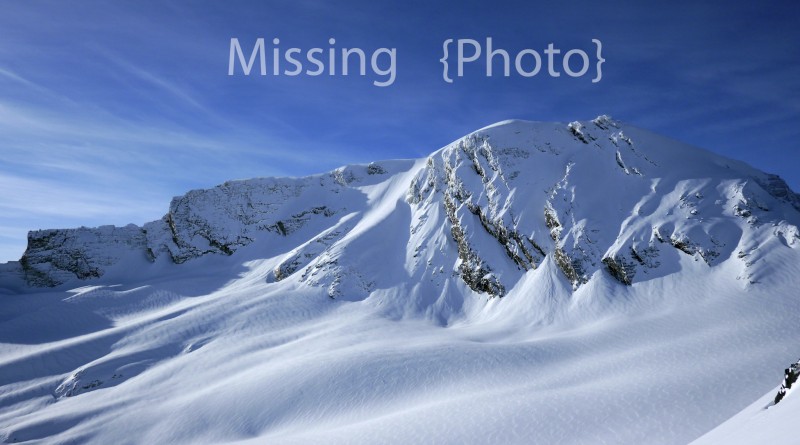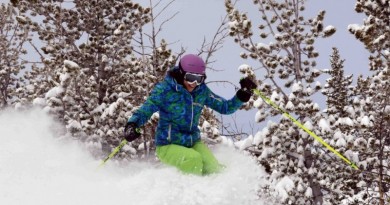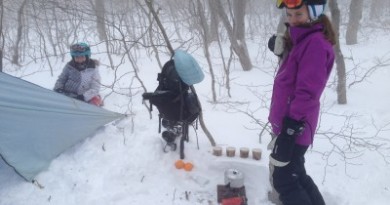The US Nordic Ski Scene: Where I am, how I got here and where we’re going
Annie Pokorny explains how she came to be a professional cross-country skier and the importance of perseverance as well as community support.
By Annie Pokorny
When I tell people I’m a professional cross-country skier, I get varied reactions. Some are positive, others rest dismissively somewhere in the “what a nice hobby” spectrum.
But the common element of nearly all of my encounters is confusion. “How did you get to be doing that?” they ask, trying to discern exactly what that is.
To many Americans, elite Nordic (another term for cross-country) skiing is a quadrennial occurrence, appearing once every four years during Olympic coverage before disappearing again into oblivion. But there’s a lot more going on in professional Nordic skiing around the country and the world outside of the Olympic cycle, and it may be close enough for you to see in your backyard.
In fact, I know it is, because in describing what I do, how I got here and where I’m going, the snowball always gets rolling on the local level. Like, really local.
Having a strong ski community to call home helps your odds of becoming an elite skier. As kids, young athletes in model ski communities such as Peru, Stowe, Middlebury, Manchester or Craftsbury enroll in the Bill Koch League (named for Olympic bronze medalist, Vermont native and product of local ski culture) and spend weekends tromping with their friends in the snow and getting a taste for (friendly) competition.
For those who liked the taste and want more racing, the opportunity to take racing to the regional level presents itself at the end of middle school. At this stage in my ski career, I was a little more concerned with boys and soccer than I was skiing, but the high school club system is set up so athletes can compete as seriously as they want. Regional races are held weekly where athletes compete to represent their region at Junior Nationals.
In middle and high school, I raced in the Pacific Northwest and Intermountain Divisions (I grew up in Spokane, Wash.), just two of nine regions across the country, including the junior powerhouse that is New England.
The end-all be-all of junior racing (that’s ages 14-20) is Junior Nationals. Each year, a different region hosts the event in March and those athletes who qualified through home competitions go head-to-head for national titles that can help them climb the national rankings, earn a spot on a collegiate ski team, or a date for the dance at the end of the week (which could also be argued as the end-all be-all of junior racing). [Stowe hosted the event in 2014 at the Trapp Touring Center.]
When an athlete does well enough at the national level, he or she reaches a kind of choose-your-own-adventure when deciding to attend college and ski at the collegiate level, or train full time and try to make the US Ski Team and race internationally. When I reached this chapter in my book, I chose both.
I started with college and enrolled at Middlebury College in Vermont (excellent academic program with a good ski team.) Like clubs at the junior level, NCAA colleges race against each other on the regional stage before qualifying athletes to the NCAA National Championships, which shuffles between Western and Eastern hosts every year. From January to March, athletes who race in the NCAA compete in a pool of athletes aged 18-24 from all nationalities and racing experience. These kids race almost as much as the pros and are expected to maintain high training schedules in their academic environments. With the import of dozens of Scandinavian and Central European racers, as well as successful national athletes, the top NCAA athletes leave the circuit ready to tackle international racing.
Which is the other side of the choose-your-own-adventure: full time racing in pursuit of international success. Many up-and-coming juniors choose this path instead of college, because racing internationally requires almost an entire winter of travel in Europe, necessitating athletes to miss college races and classes.
As a sophomore in college, I raced well enough to qualify for U23 World Championships in Liberec, Czech Republic. The previous month, Quebec City hosted a World Cup, the first in North America, and seeing that level of competition, even from the sidelines, compelled me to pursue the highest echelon of skiing possible, whatever it took.
At World Championships and World Cups, US skiers race against athletes whose national pastime is Nordic skiing. Beyond Scandinavia, cross country skiing is so ingrained in European mountain cultures that kids clip into skis before they can walk, race before they can talk and grow up to diagonal stride to work, because local trail systems make skiing more direct than driving.
If gifted athletes show talent early enough and make it out of populous junior racing pools, they lead the lives of celebrities. Funded by their home governments and compensated by endorsements, these skiers win BMWs at races and don the covers of fashion and gossip magazines. They’re also incredibly fast. But, despite our drastically different ski culture and lack of funding, American skiers are starting to beat them.
That is the dream, to be catching, and passing, the elite Europeans. Getting yourself to Europe for World Cups is the first step, one that I am currently standing on. To do so, you must stand out as an exceptional domestic competitor by leading the standings on the SuperTour circuit. The SuperTour is kind of like the NBA, with a few less spectators (and salaries).
It’s a domestic circuit in which club teams from all over the nation (I belong to SMS T2 from Stratton Mountain) travel to compete against each other in a series of races. Stretching from November to March, the SuperTour circuit snakes its way through Montana, Michigan, Vermont (Craftsbury 1/30-2/8), Wisconsin and Idaho, split into three periods. Based on results in races within each period, the SuperTour leader at the end of each period earns start rights at World Cups in the next period (what every skier hopes will be her big break).
[The Europeans and Canadians have their versions of SuperTours, too. The Fins, Swedes and Norwegians compete for World Cup spots through the aptly named Scando Cups, while central and eastern Europeans attend Europa Cups. Because the level of competition is generally higher there, many US athletes compete for funding from the National Nordic Foundation to race as guests in these races. This year, the NNF will support racing in Slovenia and France.]
When you do make a World Cup and ski your way into the top 30, you may then become a regular of World Cup competition, racing in a different country (sometimes continent) every weekend and joining the ranks of regular world champions and Olympic skiers. Right now, I’m still on the development level, I race SuperTours and have my eye on U23 world competition, but the World Cup is where I aim to go.
While Scandinavians are thrust into the sport, the product of culture and critical mass, Americans make it to the top by way of pure grit. They step up through the development ladder, funding themselves through grassroots campaigns and charitable grants, living off meager sponsorship stipends and expired Powerbars, in pursuit of that higher caliber, that highest step.
Kikkan Randall, three time overall sprint world cup leader and reigning World Champion, exemplifies that process. Finishing last in her first round of World Cups and skiing on and off the US Ski Team, she kept pushing, kept believing and made it to the top. The real endurance of the sport is staying in it long enough to see results. And the world wants us to; they’re rooting for us.
I spent the first week of the Sochi Olympics in Meroker, Norway, the Norwegian development mecca known for producing the world’s fastest junior skiers. One of those skiers joined the US contingency to watch the Norwegian broadcast of the opening ceremonies. As we watched her Olympic team promenade through the stadium, I asked her which of them she wanted to see win the Olympics.
“I want a Kikkan or another American to win.” She answered. “It’s boring when we sweep the podium, no one gets better that way.”
That’s the real goal, what keeps us here: progressing the game. From the local level to international, American skiing is about seeing what’s possible, about pushing ourselves past expectations and making skiing better, at every level.



